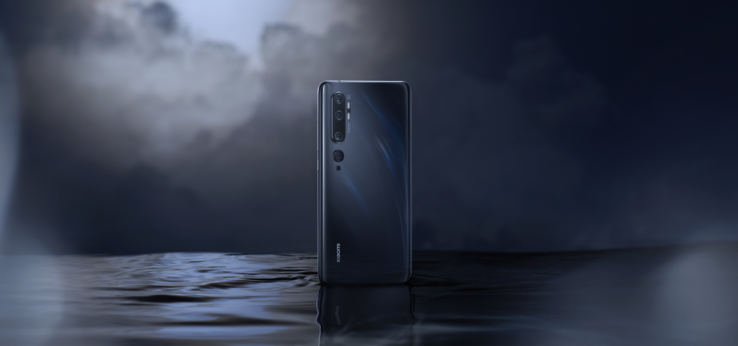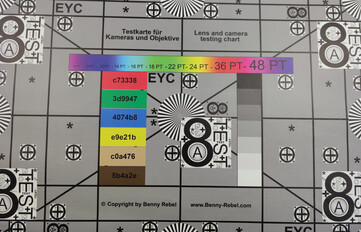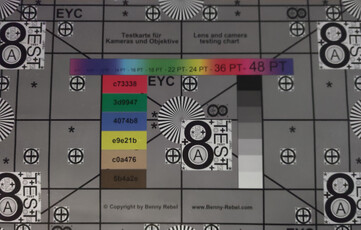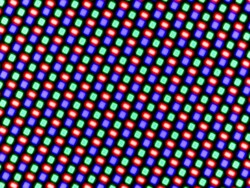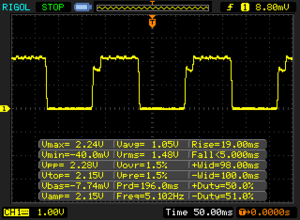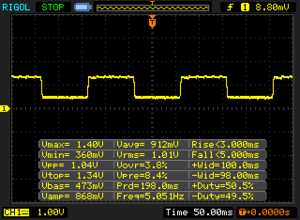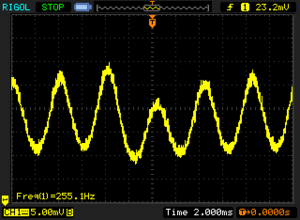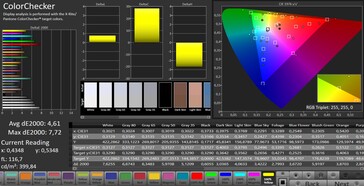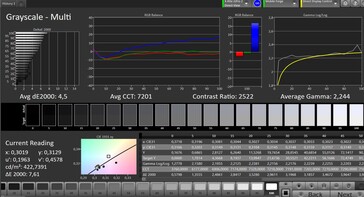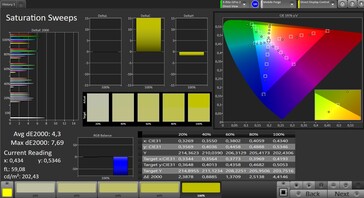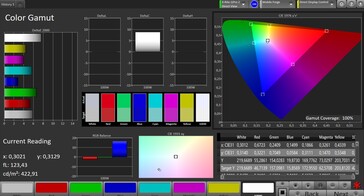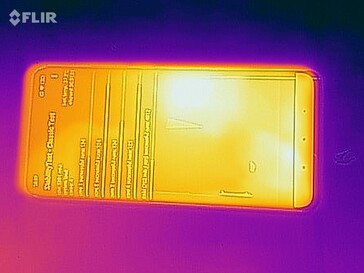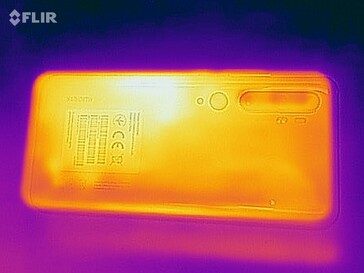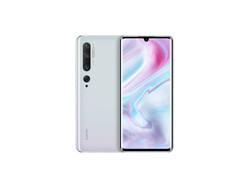Xiaomi Mi Note 10 Pro Smartphone Review – A Little More
Comparison Devices
Bewertung | Rating Version | Datum | Modell | Gewicht | Laufwerk | Groesse | Aufloesung | Preis ab |
|---|---|---|---|---|---|---|---|---|
| 83.8 % v7 (old) | v7 (old) | 01 / 2020 | Xiaomi Mi Note 10 Pro SD 730G, Adreno 618 | 208 g | 256 GB UFS 2.0 Flash | 6.47" | 2340x1080 | |
| 83.3 % v7 (old) | v7 (old) | 12 / 2019 | Xiaomi Mi Note 10 SD 730G, Adreno 618 | 208 g | 128 GB UFS 2.0 Flash | 6.47" | 2340x1080 | |
| 85.8 % v7 (old) | v7 (old) | 10 / 2019 | OnePlus 7T SD 855+, Adreno 640 | 190 g | 128 GB UFS 3.0 Flash | 6.55" | 2400x1080 | |
| 84.2 % v7 (old) | v7 (old) | 12 / 2019 | Samsung Galaxy A90 5G SD 855, Adreno 640 | 206 g | 128 GB UFS 3.0 Flash | 6.70" | 2400x1080 | |
| 86 % v7 (old) | v7 (old) | 07 / 2019 | Asus ZenFone 6 ZS630KL SD 855, Adreno 640 | 190 g | 128 GB UFS 2.1 Flash | 6.40" | 2340x1080 |
Case, Equipment and Operation - High Quality and Opulent
The Mi Note 10 Pro is the international version of the Xiaomi Mi CC9 Pro Premium Edition, and it has the best camera rating in the Dxomark, just behind the Huawei Mate 30 Pro. But we don't rely on that, of course, and do our own tests to see how the slightly improved version of Mi Note 10 performs.
Let's first take a look at the case: There are no differences to the Mi Note 10. There are once again the three colors blue-green, white and black, all with elaborate light refraction on the back. This makes the device look quite high-end, but there is no IP certification for protection against water or dust. There are no differences to the Mi Note 10 in size and weight.
However, the Xiaomi Mi Note 10 Pro comes with 6 GB RAM and 256 GB mass storage. That's a lavish configuration, but Xiaomi charges an extra 100 euro, which isn't a small amount, according to the current price level on the internet. You can't expand the memory via microSD, but there is NFC, two SIM slots and an infrared blaster, which is otherwise rarely found.
In terms of WLAN, the Mi Note 10 Pro is rather a bit below the speed of other smartphones in its class, at a very similar level to the Mi Note 10.
| Networking | |
| iperf3 transmit AX12 | |
| Asus ZenFone 6 ZS630KL | |
| Samsung Galaxy A90 5G | |
| OnePlus 7T | |
| Xiaomi Mi Note 10 | |
| Xiaomi Mi Note 10 Pro | |
| iperf3 receive AX12 | |
| Samsung Galaxy A90 5G | |
| Asus ZenFone 6 ZS630KL | |
| OnePlus 7T | |
| Xiaomi Mi Note 10 | |
| Xiaomi Mi Note 10 Pro | |
Cameras - Even Sharper
At first glance, the camera specs look just as massive as on the Xiaomi Mi Note 10: a main camera with up to 108 megapixels of resolution, plus four additional lenses on the back with wide-angle, telephoto and macro focal lengths.
The only difference in the Mi Note 10 Pro is that the main lens has one more lens, making a total of 8 lenses. More lenses per lens are usually used to compensate for colour errors or distortion. Xiaomi does not give any information about the function of the additional lens in the main lens, but maybe we can shed some light on this with our image comparison:
If you look at the test chart under perfect lighting, the edges there appear a little sharper, while the sharpness in the center of the image is quite similar. Also the light intensity has not changed, thus, the only advantage of the additional lens seems to be a slightly higher sharpness in the edge areas of the images.
If one photographs objects from close up, the photo software puts a strong blur over the background and sometimes exaggerates a little bit. Thus, the pictures should rather look like they were taken with a reflex or system camera. But apart from that, the representation of the camera is impressively sharp and also the colours appear very strong.
With the help of the additional lenses, a 5x optical zoom is possible, which also works in fine steps, and with the help of optical image stabilizers, the image is protected against blurring.
Videos can be recorded in 4K at a maximum of 30 fps. We really like the image quality here, but optical zoom is not possible during recording.
The front camera with its lush 32 megapixels also takes sharp and detailed pictures.
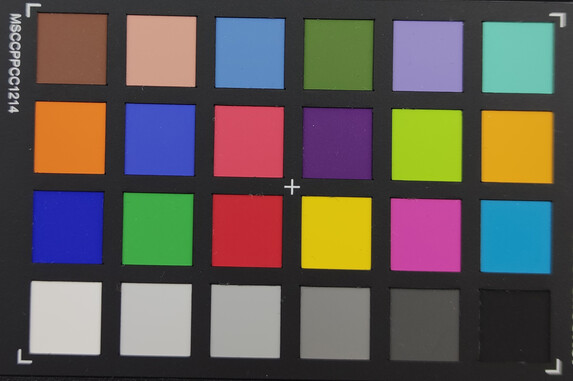
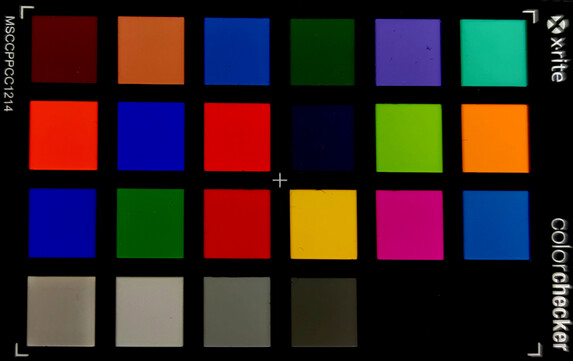
Display - Bright and Accurate
In our brightness test we didn't achieve quite as high a score as the Xiaomi Mi 10, but the Mi 10 Pro is still on a class level. Apart from that, the AMOLED screen's values are quite similar: quick response times, relatively small color deviations and a slightly visible blue cast.
All in all, it's great that Xiaomi uses a high-quality screen with HDR support, which is by no means common in this price range.
| |||||||||||||||||||||||||
Brightness Distribution: 89 %
Center on Battery: 579 cd/m²
Contrast: ∞:1 (Black: 0 cd/m²)
ΔE ColorChecker Calman: 4.61 | ∀{0.5-29.43 Ø4.77}
ΔE Greyscale Calman: 4.2 | ∀{0.09-98 Ø5}
100% sRGB (Calman 2D)
Gamma: 2.244
CCT: 7201 K
| Xiaomi Mi Note 10 Pro AMOLED, 2340x1080, 6.5" | Xiaomi Mi Note 10 AMOLED, 2340x1080, 6.5" | OnePlus 7T AMOLED, 2400x1080, 6.6" | Samsung Galaxy A90 5G Super AMOLED, 2400x1080, 6.7" | Asus ZenFone 6 ZS630KL IPS, 2340x1080, 6.4" | |
|---|---|---|---|---|---|
| Response Times | 21% | 50% | 25% | -229% | |
| Response Time Grey 50% / Grey 80% * (ms) | 8 ? | 10 ? -25% | 6 ? 25% | 10 ? -25% | 44 ? -450% |
| Response Time Black / White * (ms) | 24 ? | 8 ? 67% | 6 ? 75% | 6 ? 75% | 25.6 ? -7% |
| PWM Frequency (Hz) | 255 | 215.5 | 357 | 223 | 2404 ? |
| Screen | 5% | 20% | -13% | 1% | |
| Brightness middle (cd/m²) | 579 | 625 8% | 693 20% | 581 0% | 569 -2% |
| Brightness (cd/m²) | 576 | 607 5% | 703 22% | 581 1% | 537 -7% |
| Brightness Distribution (%) | 89 | 89 0% | 96 8% | 94 6% | 79 -11% |
| Black Level * (cd/m²) | 0.31 | ||||
| Colorchecker dE 2000 * | 4.61 | 4.38 5% | 3.42 26% | 5.44 -18% | 3.5 24% |
| Colorchecker dE 2000 max. * | 7.72 | 6.83 12% | 6.12 21% | 13.05 -69% | 6 22% |
| Greyscale dE 2000 * | 4.2 | 4.1 2% | 3.3 21% | 4 5% | 5.1 -21% |
| Gamma | 2.244 98% | 2.251 98% | 2.265 97% | 2.118 104% | 2.36 93% |
| CCT | 7201 90% | 7251 90% | 6799 96% | 5882 111% | 6827 95% |
| Contrast (:1) | 1835 | ||||
| Total Average (Program / Settings) | 13% /
9% | 35% /
27% | 6% /
-3% | -114% /
-57% |
* ... smaller is better
Display Response Times
| ↔ Response Time Black to White | ||
|---|---|---|
| 24 ms ... rise ↗ and fall ↘ combined | ↗ 19 ms rise | |
| ↘ 5 ms fall | ||
| The screen shows good response rates in our tests, but may be too slow for competitive gamers. In comparison, all tested devices range from 0.1 (minimum) to 240 (maximum) ms. » 53 % of all devices are better. This means that the measured response time is worse than the average of all tested devices (20.2 ms). | ||
| ↔ Response Time 50% Grey to 80% Grey | ||
| 8 ms ... rise ↗ and fall ↘ combined | ↗ 3 ms rise | |
| ↘ 5 ms fall | ||
| The screen shows fast response rates in our tests and should be suited for gaming. In comparison, all tested devices range from 0.165 (minimum) to 636 (maximum) ms. » 19 % of all devices are better. This means that the measured response time is better than the average of all tested devices (31.6 ms). | ||
Screen Flickering / PWM (Pulse-Width Modulation)
| Screen flickering / PWM detected | 255 Hz | ||
The display backlight flickers at 255 Hz (worst case, e.g., utilizing PWM) . The frequency of 255 Hz is relatively high, so most users sensitive to PWM should not notice any flickering. However, there are reports that some users are still sensitive to PWM at 500 Hz and above, so be aware. In comparison: 53 % of all tested devices do not use PWM to dim the display. If PWM was detected, an average of 8086 (minimum: 5 - maximum: 343500) Hz was measured. | |||
Performance, Emissions and Battery Life - More Power Would Be Good
In terms of performance, our Xiaomi phone actually gets a bit more problems in the test than the cheaper Mi Note 10 due to the higher price: In the price range around 600 euro, many smartphones with high-end SoCs are already on the road, whereas our test device relies on a Qualcomm Snapdragon 730G, which has decent performance values for everyday use, but can't hold a candle to a Snapdragon 855+ in the OnePlus 7T, for example. The Galaxy A90 also has much greater performance reserves.
The tests with the Mi Note 10, which also relies on this SoC, have shown that gaming is also quite possible, but if you are looking for high-end power in your smartphone, the Mi Note 10 Pro might disappoint you.
The temperature development is not critical: the Mi Note 10 Pro's outer shell always stays cool. The loudspeaker on the bottom edge seems to be the same as the Mi Note 10, at least it offers an almost identical sound. The speaker does its job properly, doesn't distort and can get quite loud. Headphones can be connected via the 3.5mm jack, as well as via Bluetooth. Both work perfectly.
Our Xiaomi Mi Phone also does very well in terms of battery life: We are very satisfied with 18:32 hours in our WLAN test and Xiaomi is allowed to pat herself on the back: "You have to search a long time before you find such a persistent smartphone.
| Xiaomi Mi Note 10 Pro | Xiaomi Mi Note 10 | OnePlus 7T | Samsung Galaxy A90 5G | Asus ZenFone 6 ZS630KL | Average 256 GB UFS 2.0 Flash | Average of class Smartphone | |
|---|---|---|---|---|---|---|---|
| AndroBench 3-5 | 4% | 40% | 114% | 35% | -9% | 384% | |
| Sequential Read 256KB (MB/s) | 499.2 | 480.5 -4% | 1406 182% | 1418 184% | 831 66% | 484 ? -3% | 2246 ? 350% |
| Sequential Write 256KB (MB/s) | 205.1 | 243.6 19% | 218.4 6% | 522 155% | 195.6 -5% | 203 ? -1% | 1882 ? 818% |
| Random Read 4KB (MB/s) | 119.2 | 106.2 -11% | 170.1 43% | 190.5 60% | 153.3 29% | 131.7 ? 10% | 298 ? 150% |
| Random Write 4KB (MB/s) | 108.5 | 118.9 10% | 29.9 -72% | 168.5 55% | 160.2 48% | 65.3 ? -40% | 346 ? 219% |
| Sequential Read 256KB SDCard (MB/s) | 75.1 ? | 87 ? | 74.5 ? | ||||
| Sequential Write 256KB SDCard (MB/s) | 59.4 ? | 62.5 ? | 53.5 ? |
Temperature
(+) The maximum temperature on the upper side is 39.8 °C / 104 F, compared to the average of 35.2 °C / 95 F, ranging from 21.9 to 247 °C for the class Smartphone.
(+) The bottom heats up to a maximum of 39.6 °C / 103 F, compared to the average of 34 °C / 93 F
(+) In idle usage, the average temperature for the upper side is 29 °C / 84 F, compared to the device average of 32.9 °C / 91 F.
Speakers
Xiaomi Mi Note 10 Pro audio analysis
(±) | speaker loudness is average but good (81.7 dB)
Bass 100 - 315 Hz
(-) | nearly no bass - on average 65.7% lower than median
(+) | bass is linear (0% delta to prev. frequency)
Mids 400 - 2000 Hz
(-) | nearly no mids - on average 65.7% lower than median
(+) | mids are linear (0% delta to prev. frequency)
Highs 2 - 16 kHz
(-) | nearly no highs - on average 65.7% lower than median
(+) | highs are linear (0% delta to prev. frequency)
Overall 100 - 16.000 Hz
(-) | overall sound is not linear (121.7% difference to median)
Compared to same class
» 90% of all tested devices in this class were better, 8% similar, 2% worse
» The best had a delta of 11%, average was 35%, worst was 134%
Compared to all devices tested
» 97% of all tested devices were better, 2% similar, 1% worse
» The best had a delta of 4%, average was 24%, worst was 134%
Xiaomi Mi Note 10 audio analysis
(+) | speakers can play relatively loud (83.6 dB)
Bass 100 - 315 Hz
(-) | nearly no bass - on average 69.6% lower than median
(+) | bass is linear (0% delta to prev. frequency)
Mids 400 - 2000 Hz
(-) | nearly no mids - on average 69.6% lower than median
(+) | mids are linear (0% delta to prev. frequency)
Highs 2 - 16 kHz
(-) | nearly no highs - on average 69.6% lower than median
(+) | highs are linear (0% delta to prev. frequency)
Overall 100 - 16.000 Hz
(-) | overall sound is not linear (119.9% difference to median)
Compared to same class
» 89% of all tested devices in this class were better, 8% similar, 3% worse
» The best had a delta of 11%, average was 35%, worst was 134%
Compared to all devices tested
» 97% of all tested devices were better, 3% similar, 1% worse
» The best had a delta of 4%, average was 24%, worst was 134%
Battery Life
| Xiaomi Mi Note 10 Pro 5260 mAh | Xiaomi Mi Note 10 5260 mAh | OnePlus 7T 3800 mAh | Samsung Galaxy A90 5G 4500 mAh | Asus ZenFone 6 ZS630KL 5000 mAh | Average of class Smartphone | |
|---|---|---|---|---|---|---|
| Battery Runtime | ||||||
| WiFi Websurfing (h) | 18.5 | 18.8 2% | 14.9 -19% | 15.8 -15% | 13.4 -28% | 19.3 ? 4% |
Pros
Cons
Conclusion - Great Camera, Lasts Very Long
If the Xiaomi Mi Note 10 has too little memory, or if you're generally a fan of plenty of room for data, the choice is clear: The Mi Note 10 Pro offers a very lavish memory configuration with 256 GB UFS 2.0 flash, even for its price range. However, with just under 600 euro, it's not such a big bargain anymore as the Mi Note 10 in its price range.
This is mainly due to the fact that you can get partly much more powerful devices for around 600 euro, which also offer even faster WLAN.
The advantages of the Mi Note 10 Pro are the great screen with HDR support, the great camera, which is even slightly improved in detail compared to the Mi Note 10 and the eternally long runtimes of the smartphone, which it has in common with the Mi Note 10.
The Xiaomi Mi Note 10 Pro is a well-equipped smartphone with a good camera, only in terms of performance it could be even faster.
If the price goes down a bit, the Xiaomi smartphone should become even more interesting. It's not a price-performance hit for just under 600 euro, mainly because of its too low performance, but it's also not a bad offer. Overall, the phone is, like its smaller brother, definitely recommendable.
Xiaomi Mi Note 10 Pro
- 09/03/2022 v7 (old)
Florian Schmitt


